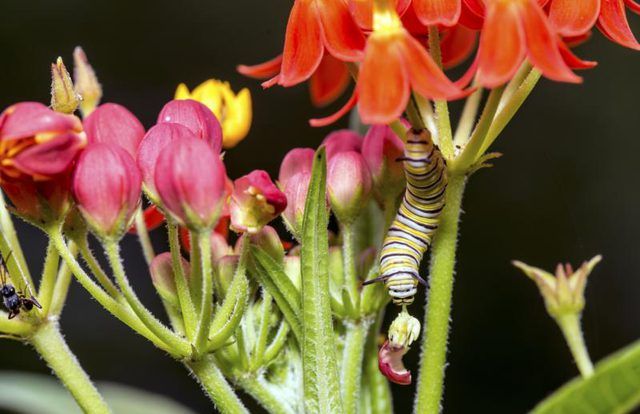Bulbs
Flower Basics
Flower Beds & Specialty Gardens
Flower Garden
Garden Furniture
Garden Gnomes
Garden Seeds
Garden Sheds
Garden Statues
Garden Tools & Supplies
Gardening Basics
Green & Organic
Groundcovers & Vines
Growing Annuals
Growing Basil
Growing Beans
Growing Berries
Growing Blueberries
Growing Cactus
Growing Corn
Growing Cotton
Growing Edibles
Growing Flowers
Growing Garlic
Growing Grapes
Growing Grass
Growing Herbs
Growing Jasmine
Growing Mint
Growing Mushrooms
Orchids
Growing Peanuts
Growing Perennials
Growing Plants
Growing Rosemary
Growing Roses
Growing Strawberries
Growing Sunflowers
Growing Thyme
Growing Tomatoes
Growing Tulips
Growing Vegetables
Herb Basics
Herb Garden
Indoor Growing
Landscaping Basics
Landscaping Patios
Landscaping Plants
Landscaping Shrubs
Landscaping Trees
Landscaping Walks & Pathways
Lawn Basics
Lawn Maintenance
Lawn Mowers
Lawn Ornaments
Lawn Planting
Lawn Tools
Outdoor Growing
Overall Landscape Planning
Pests, Weeds & Problems
Plant Basics
Rock Garden
Rose Garden
Shrubs
Soil
Specialty Gardens
Trees
Vegetable Garden
Yard Maintenance
How to Grow Orange Glory
How to Grow Orange Glory. A plant sometimes called pleurisy root or butterfly weed (Asclepias tuberosa) might not strike you as one known for its beauty. Call it orange glory instead, and let your imagination take over. Growing orange glory has few challenges, and none of them diminish the pleasure of seeing its blazing-orange flowers surrounded by...

A plant sometimes called pleurisy root or butterfly weed (Asclepias tuberosa) might not strike you as one known for its beauty. Call it orange glory instead, and let your imagination take over. Growing orange glory has few challenges, and none of them diminish the pleasure of seeing its blazing-orange flowers surrounded by clouds of bright, nectar-thirsty butterflies. Plant the summer-blooming milkweed perennial, which grows in U.S. Department of Agriculture plant hardiness zones 4 though 10, where its mildly toxic sap won't endanger kids or pets.
The Planting Site
Orange glory has a deep taproot and resents being moved, so choose its planting site with care. The best spot has at least six hours of daily sun and room to space multiple plants 1 1/2 to 2 feet apart. The plant prefers dry, loose, poor soil with excellent drainage to protect it from crown rot. Test the drainage by filling a 1-foot-deep hole with water. If it doesn't empty in 30 minutes, till a 1- to 2-inch layer of organic compost into the soil's top 6 or 8 inches before planting. Use between 30 and 60 pounds of compost per 10 square feet of planting bed.
Watering and Feeding
Water newly planted orange glory to keep the soil moist -- not wet -- until you see new growth. A 1-inch layer of organic mulch, such as shredded leaves, helps preserve soil moisture during this time. Once the water-storing tap root is established, provide supplemental water only if drought dries the soil completely. Overwatering encourages crown rot. This native plant does best with no fertilizer.
Deadheading and Pruning
Pinching your orange glory's flower clusters off at the base as they fade stimulates a new round of buds. Flowers left on the plant form banana-shaped, pale-green seedpods that split to scatter the tufted seeds. Remove the pods before they burst to keep the plant from spreading. Orange glory's new growth doesn't appear until late spring. Don't prune the old stalks until then so you can find it.
Leaf Diseases
Leaf spots or rust disease may blemish orange glory's leaves, but they're seldom serious enough to require treatment. To discourage these problems, keep the leaves dry when you water and the area around you plants free of mulch or debris that might harbor fungal spores or bacteria. Prune leaves with dark or reddish-brown spots and dispose of them in sealed plastic bags. Sterilize your tools in rubbing alcohol between cuts to avoid spreading the diseases.
Oleander Aphids
Yellow oleander aphids often colonize orange glory's stems and leaves and feed on the sap. Other than the sticky, clear waste they excrete, the damage is minor. The more serious problem is that the aphids' natural predators, including lady bugs and lacewings, also feed on monarch butterfly eggs and caterpillars. If you're growing orange glory to sustain the monarch population, check daily for the tiny, pear-shaped pests and scrape them off with a soft toothbrush. To control a severe infestation, prune the affected plant parts and dispose of them in sealed plastic bags.